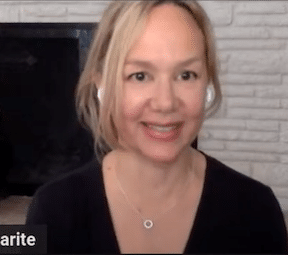
Using a synopsis as a shortcut will give heft to your story
A large question when one is starting a new novel is whether or not to outline the plot, the characters, and all the characters’ actions. That is, to have a clear idea of its “arc”– its beginning, middle, and end, which will tell the reader whether the protagonist gets what she/he want or needs. For some novelists, this might be helpful. For others, not so much.
Grace Paley once said, “Everyone, real or invented, deserves the open destiny of life.” I feel that if I write a stringent outline, I am limiting what can happen magically and organically from the first page to the last.
What I do instead is write a kind of synopsis. This will help me not get lost and it doesn’t hinder that passage through an open door where anything can really happen. For example, for my book that I recently finished about knowing a famous writer and being thrown into the cauldron of literary New York after her death, I wrote this as a synopsis:
I have simplified from the Truby Method (commonly used in writing workshops), a standard conception of how a novel must go and how an outline, delineating all its plot points to a planned climax and a planned denouement, should go. A synopsis sticks to the conflict and asks a large and important question that will permeate the novel. I believe one should get a good idea of what the conflict is inside the protagonist and what question is being asked.
Many great writers have said that one should write about an inner conflict, that if one doesn’t write about it, one will be haunted. It is about understanding something that provides the drive because, through writing, whether it is genre work or literary work, that drive will culminate into what Aristotle called “catharsis.” This approach gives all sorts of energy to your writing. You become driven to find out how and why an event, person, or memory has baffled, hurt, or confused you. If you can’t resolve the conflict, that is fine for an ending. It’s left exposed and it has been a story, a character’s journey propelled by an urgent conflict. Try to see two opposing views of the conflict. In a sense, this heightens the urgency. A good exercise is to write a story with that conflict but tell the story from the opposite of point view that doesn’t agree with the character’s view.
Exercises to work out the central conflict
The first step is to choose an active conflict with two distinct but contradictory resolutions. For example, a character could be deciding whether to stay in a marriage or not. First, clearly write out the paragraphs that show what will happen if the couple stays together from the point of view of the main member of the couple. Then write out the opposite decision by this same member of the couple. Tell this clearly, both the pros and cons of staying together or not staying together. Create consequences on each individual decision or contradictory decision and spell out the value or lack of value to staying together, as well as the value of not staying together for the main characters.
Another vivid example would be to write two opposing points of view about a mercy killing when a third character lies in the hospital on life support. Should the main character “pull the plug” or keep the other character on life support? In contrast, should the main character have the patient put indefinitely on life support and not consider pulling the plug. What are the moral issues involved in the different choices?
Try to find dramatic experiences like the breakup of a marriage or a hospital scene where a third character is facing death. In each case, show and write out opposite decisions as to what to do, Each choice should involve large risks.
As a second exercise, try to find two different kinds of conflicts: one internal and one external. For example, internally a main character must decide whether to accept or not accept a certain truth that comes out of an event, such as a man leaving a woman because he didn’t love her, or that man leaving because he did love her and couldn’t express those feelings. Externally, a main character must decode whether to move to another part of the country for a promotion, or stay where she/he is already to preserve family unity.
Another exercise that will foster writing about a conflict is to place your character in a trapped position. This “trapped position” can vary from actually being trapped in a physical setting from which there doesn’t appear to be an exit to being in trapped relationship. Explore the consequences of impassivity and aggressivity on the story and its characters. State if the character doesn’t try to break through this trap and instead remains passive, and how there will be consequences for the inactive. Alternately, the character can try to break out of the trap aggressively and do everything possible to break through the trap. This will help clarify what the character is experiencing. Usually, a novel is a long argument, in a way, of clashing viewpoints.
Aristotle’s theory of drama
Long ago, Aristotle gave a solidly timeless theory of drama, easily applicable to novel writing: “Tragedy,” Aristotle wrote, “is an imitation of an action that is serious, complete, and of a certain magnitude; in language embellished with each kind of artistic ornament, the several kinds being found in separate parts of the play; in the form of action, not of narrative; with incidents arousing pity and fear, wherewith to accomplish its katharsis of such emotions. . . . Every Tragedy, therefore, must have six parts, which parts determine its quality—namely, Plot, Characters, Diction (in the case of the novel dialogue), Thought, Spectacle, Melody (in the case of the novel language elements).”
The “imitation of an action” simply means that the central conflict in the character will dictate an action, a motive. That is what we mean by “plot.” Further, an action can be translated in modern-day novel writing as a conflict. What does the conflict drive the character to do? Even if it’s only being still, that’s nonetheless an action. Aristotle’s emphasis on catharsis is also essential. In other theories, he has written about the tragic hero and his journey as creating in the audience/reader identification and then in the end offering catharsis from that identification as well as relief because they, the readers, didn’t go through the experience.
This has always made more sense to me, given me more freedom than the standard Truby method. It’s not about the main character getting what they want or need, but a climax of deep emotions. I don’t think the universe is so bendable that anyone can get exactly what they want/need. Aristotle puts the plot inside the inner life of the character. He then asks the writer to create a motive from the conflict, which is called “action.” He also tells us that the conflict must have some urgency and inspire pity and fear—in other words, the conflict and motive should be dramatic, important, of great consequence.
I hope to write more about this and about how, though writing the novel came much later in history, it is still deeply rooted in ideas from Greek tragedy and Shakespearean drama. I hope this helps those struggling with whether to write that outline, or leave your character to the “open destiny of life.”
Image at top by jef Safi (CC BY NC ND). This article originally appeared at Authors First.






